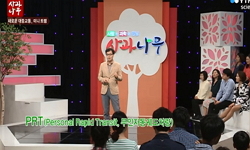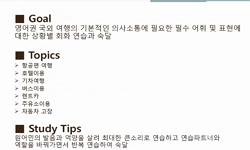The purpose of this study was to point out the operational system in bus run in Jeju Island and lay out scheme in activating the frequency of bus use. For fulfillment of the study purpose statement paradigm of transportation policy, meaning and role ...
http://chineseinput.net/에서 pinyin(병음)방식으로 중국어를 변환할 수 있습니다.
변환된 중국어를 복사하여 사용하시면 됩니다.
- 中文 을 입력하시려면 zhongwen을 입력하시고 space를누르시면됩니다.
- 北京 을 입력하시려면 beijing을 입력하시고 space를 누르시면 됩니다.
https://www.riss.kr/link?id=T9577748
- 저자
-
발행사항
제주 : 제주대학교 행정대학원, 2001
-
학위논문사항
학위논문(석사) -- 제주대학교 행정대학원 , 행정학과 일반행정전공 , 2001
-
발행연도
2001
-
작성언어
한국어
- 주제어
-
KDC
326.31 판사항(4)
-
발행국(도시)
제주특별자치도
-
형태사항
v, 110p. : 삽도 ; 26 cm.
- 소장기관
-
0
상세조회 -
0
다운로드
부가정보
다국어 초록 (Multilingual Abstract)
The purpose of this study was to point out the operational system in bus run in Jeju Island and lay out scheme in activating the frequency of bus use.
For fulfillment of the study purpose statement paradigm of transportation policy, meaning and role of public transportation, and the necessity which the government should intervene in the name of an aid were investigated in the literature review.
In recent days the philosophy of policy have been converted into the public transportation and the green-oriented transportation policy compared to the domination of the road construction and automobile-oriented policy in the past. In addition to the changing philosophy, the strategy for the implementation has been switched into the TDM (Transportation Demand Management) technique which is an attempt to solve the traffic congestion with few expenses.
The overall philosophy of this study was focused on the demand management policy which makes the car drivers bear the economic expenses.
In the chapter of an analysis of problems, the dimension for consciousness, demand management, operation of the bus company, and jurisdiction/institutional aspects were investigated.
This study, focused on the analytical frame mentioned above, presented the scheme for the reinforcement of public transportation policy.
First, the activation of public transportation use is swayed by the change of citizen consciousness. Besides, the kindness of the bus driver should be required.
Second, the demand management policy causing the economic expenses should be carried out. The raise of the fuel cost, the parking fee, the toll fee, the driving restriction, the automobile tax, the fine, and the introduction of the system for own garage should be implemented.
Third, the infrastructure for buses and should be upgraded. The concrete plan is to implement the introduction of public terminal, bus-only lanes, bus-only streets, bus-preferred signals, bus information system, high quality/diversification of the bus, and the improvement of bus stop.
Fourth, the administrative/financial supports should be in bus operating companies. The aid for profit-making routes, the aid for student discounts rate, the reduction of fuel tax, the new law, which introduces the special article for funding medium and small-sized enterprises, and the enactment of the activation of public transportation.
Fifth, the plan for the activation of public transportation is investigated in relation to the other transportation. The public transportation is not only related to the automobiles but also related to the bicycles. Besides, the relation between area of transportation pacification and public transportation, between the walking environment and public transportation, between taxies and public transportation, and between the cross-country bus and public transportation are important because of the limitation of public transportation as the sole independent transportation.
Sixth, the awareness of role about the bus should be reestablished because it is flexible to the publicity and the role change. In addition, the system for the public management, tentatively called "an ordinance of an activation for local buses" and the special accounts, should be established.
The limitation of this study is not to investigated the type of the automobile ownership. In other words, the opinion of the policy about the economic expenses would be differed depending on the type whether the compact car drivers or the medium-sized car drivers.
An other limitation of this study is not to deduce the public transportation function based on the investigation. The public transportation function is the useful formula predicting the variation of the public transportation demand caused by policy change though it is differed by environmental changes.
As the limitation of this study is complemented by future studies, the public transportation in Jeju Island would be much more activated.
목차 (Table of Contents)
- 목차
- 제1장 서론 = 1
- 제1절 연구의 목적 및 배경 = 1
- 제2절 연구의 방법 및 범위 = 2
- 1. 연구의 방법 = 2
- 목차
- 제1장 서론 = 1
- 제1절 연구의 목적 및 배경 = 1
- 제2절 연구의 방법 및 범위 = 2
- 1. 연구의 방법 = 2
- 2. 연구의 범위 = 3
- 제3절 연구의 분석틀 = 5
- 제2장 대중교통 이용 활성화에 대한 이론고찰 = 7
- 제1절 대중교통의 의의와 활성화의 규범적 준거 = 7
- 1. 대중교통의 의의와 역할 = 7
- 2. 승용차 위주의 교통정책에서 대중교통정책 중심으로의 패러다임 이동 = 9
- 3. 대중교통에 대한 지방정부의 역할의 당위성 = 11
- 제2절 통행수요의 전환을 위한 승용차 억제정책 = 14
- 1. 대중교통으로 통행수요의 전환관련 이론 = 14
- 2. 대중교통 선호증가를 위한 승용차 억제정책 = 22
- 제3절 대중교통 활성화 당위성이 제주시에 주는 함의 정리 = 28
- 제3장 제주시 시내버스 현황 및 문제점 = 31
- 제1절 제주시 교통 및 시내버스 현황 = 31
- 1. 전국대비 제주도의 자동차 등록 현황 = 31
- 2. 제주시 자동차 등록과 증가 현황 = 32
- 3. 제주시에 등록된 자동차관련 업체 현황 = 35
- 4. 제주시 시내버스 노선 현황 = 37
- 제2절 제주시 시내버스의 제 문제점 = 38
- 1. 운전자의 직업의식 결여와 무리하게 요구하는 시민 = 38
- 2. 자가용 선호를 증가시키는 낮은 서비스 수준 = 42
- 3. 과당경쟁과 이용자 감소에 의한 적자경영 = 44
- 4. 공영화 등 지원관련 법.제도의 미흡 = 50
- 제4장 제주시 대중교통 이용 활성화 방안 = 53
- 제1절 대중교통과 고객에 대한 시민과 운전자의식 고양 = 54
- 1. 시민의식의 변화 = 54
- 2. 운전기사의식의 변화 = 56
- 제2절 자가용에서 대중교통선호로의 수요관리 = 57
- 1. 승용차 연료비인상과 대중교통 활성화 = 58
- 2. 주차요금 인상 = 61
- 3. 통행료징수의 정도와 교통수단 선호경향 = 64
- 4. 부제운행정도와 교통수단 선호경향 = 65
- 5. 자동차 세금인상 = 66
- 6. 각종 범칙금의 강화 = 67
- 7. 교통유발 부담금의 부과 = 68
- 8. 장기적 차고지 증명제도 필요 = 69
- 9. 경제적 부담을 주는 수요관리정책에 대한 정리 = 69
- 제3절 버스 우선 정책과 재정지원을 통한 버스회사 경영개선 = 71
- 1. 버스 우선정책 = 71
- 2. 버스회사에 대한 재정지원 강화 = 81
- 3. 타교통수단의 관계 속에서 시내버스의 활성화 유도 = 89
- 제4절 공영화를 위한 법.제도 개선 = 96
- 1. 시내버스 역할의 재정립 = 96
- 2. 공영화를 위한 기반 정립 = 97
- 제5장 결론 = 99
- 참고문헌 = 102
- 대중교통 이용 활성화를 위한 설문지 = 105
- ABSTRACT = 111










